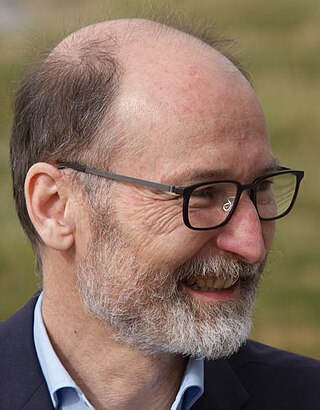
The Lemovii were a Germanic tribe, only once named by Tacitus in the late 1st century. He noted that they lived near the Rugii and Goths and that they had short swords and round shields.

The Dębczyn culture is an archeological culture in Pomerania from the third to sixth centuries. It was derived from the neighboring Wielbark culture with influences from the Elbe region. The culture was superseded as the result of the later migrations of West Slavs, in particular of the Pomeranians.
Germanische Altertumskunde Online, formerly called Reallexikon der Germanischen Altertumskunde, is a German encyclopedia of the study of Germanic history and cultures, as well as the cultures that were in close contact with them.

Kurt Ranke was a German ethnologist who specialized in the study of fairy tales.

After the glaciers of the Ice Age in the Early Stone Age withdrew from the area, which since about 1000 AD is called Pomerania, in what are now northern Germany and Poland, they left a tundra. First humans appeared, hunting reindeer in the summer. A climate change in 8000 BC allowed hunters and foragers of the Ertebølle-Ellerbek culture to continuously inhabit the area. These people became influenced by farmers of the Linear Pottery culture who settled in southern Pomerania. The hunters of the Ertebølle-Ellerbek culture became farmers of the Funnelbeaker culture in 3000 BC. The Havelland culture dominated in the Uckermark from 2500 to 2000 BC. In 2400 BC, the Corded Ware culture reached Pomerania and introduced the domestic horse. Both Linear Pottery and Corded Ware culture have been associated with Indo-Europeans. Except for Western Pomerania, the Funnelbeaker culture was replaced by the Globular Amphora culture a thousand years later.
Joachim Werner was a German archaeologist who was especially concerned with the archaeology of the Early Middle Ages in Germany. The majority of German professorships with particular focus on the field of the Early Middle Ages were in the second half of the 20th century occupied by his academic pupils.

Herbert Jankuhn was a German archaeologist of Prussian Lithuanian heritage who specialized in the archaeology of Germanic peoples. He is best known for his excavations at the Viking Age site of Hedeby, and for his instrumental role in the publishing of the second edition of the Reallexikon der Germanischen Altertumskunde.
Ernst Sprockhoff was a German prehistorian and inventor of the Sprockhoff numbering system for megalithic monuments in Germany.

The Wittemoor timber trackway is a log causeway or corduroy road across a bog at Neuenhuntdorf, part of the Berne in the district of Wesermarsch in Lower Saxony, Germany. Originating in the pre-Roman Iron Age, it is one of several such causeways which have been found in the North German Plain, particularly in the Weser-Ems region. It was excavated in 1965 and 1970 and prehistoric wooden cult figurines were discovered in association with it. It is trackway number XLII (IP).
Horst Wolfgang Böhme is a German archaeologist with a focus on Late Antiquity / Early Middle Ages and research into castles.

The Geißkopf is a foothill, 359 m above sea level (NHN), near Berghaupten in the south German state of Baden-Württemberg. During the Migration Period there was evidently a Roman or Germanic military camp on the strategically placed heights.
Gundomad or Gundomar, was an Alemannic petty king in the area around Breisgau, Germany in the 4th century. The Roman historian Ammianus Marcellinus reports that Gundomad, together with his brother Vadomarius, in 354 concluded a peace treaty at Augst after having been defeated in battle by emperor Constantius II. In 357, Gundomad was killed by his own people for having been to loyal to the Romans. They then made an uprising against emperor Julian.
Vithicabius was an Alemannic petty king from 360 to 368. He was a son of Vadomarius, and succeeded his father as king after the latter had been banished to Hispania by emperor Julian. He had grown up in Roman custody. Ammianus Marcellinus describes Vithicabius as a physically weak, but a brave and aggressive leader. Although having promised Julian to maintain peace, Vithicabius continued raiding Roman territory. He was assassinated in 368 under Valentinian I by a bribed servant, but the Alemannic raids on Roman territory continued nevertheless.
Dieter Gutknecht is a German musicologist and former University music director.

Sebastian Brather is a German medieval archaeologist and co-editor of Germanische Altertumskunde Online.
Hubert Fehr is a German archaeologist. Fehr received his studied history, Roman archaeology and Medieval history at the University of Freiburg from 1991 to 1998. With financial support from the European Union, Fehr gained his PhD in 2003 with a thesis on relationships between the Germanic peoples and Romans under the Merovingian dynasty. His thesis was published as a supplement to the Reallexikon der Germanischen Altertumskunde.

Otto Gschwantler was an Austrian philologist who was head of the Institute for Germanic Studies at the University of Vienna. He specialized in the study of early Germanic literature.

Reinhard Wenskus was a German historian who was Professor of Medieval History at the University of Göttingen. His theories on the identity of Germanic peoples have had a major influence on contemporary research by historians of late antiquity.
Benjamin Sigmund Oehrl is a German archaeologist and philologist who specializes in Germanic studies.
Matthias Untermann is a German art historian and medieval archaeologist.









